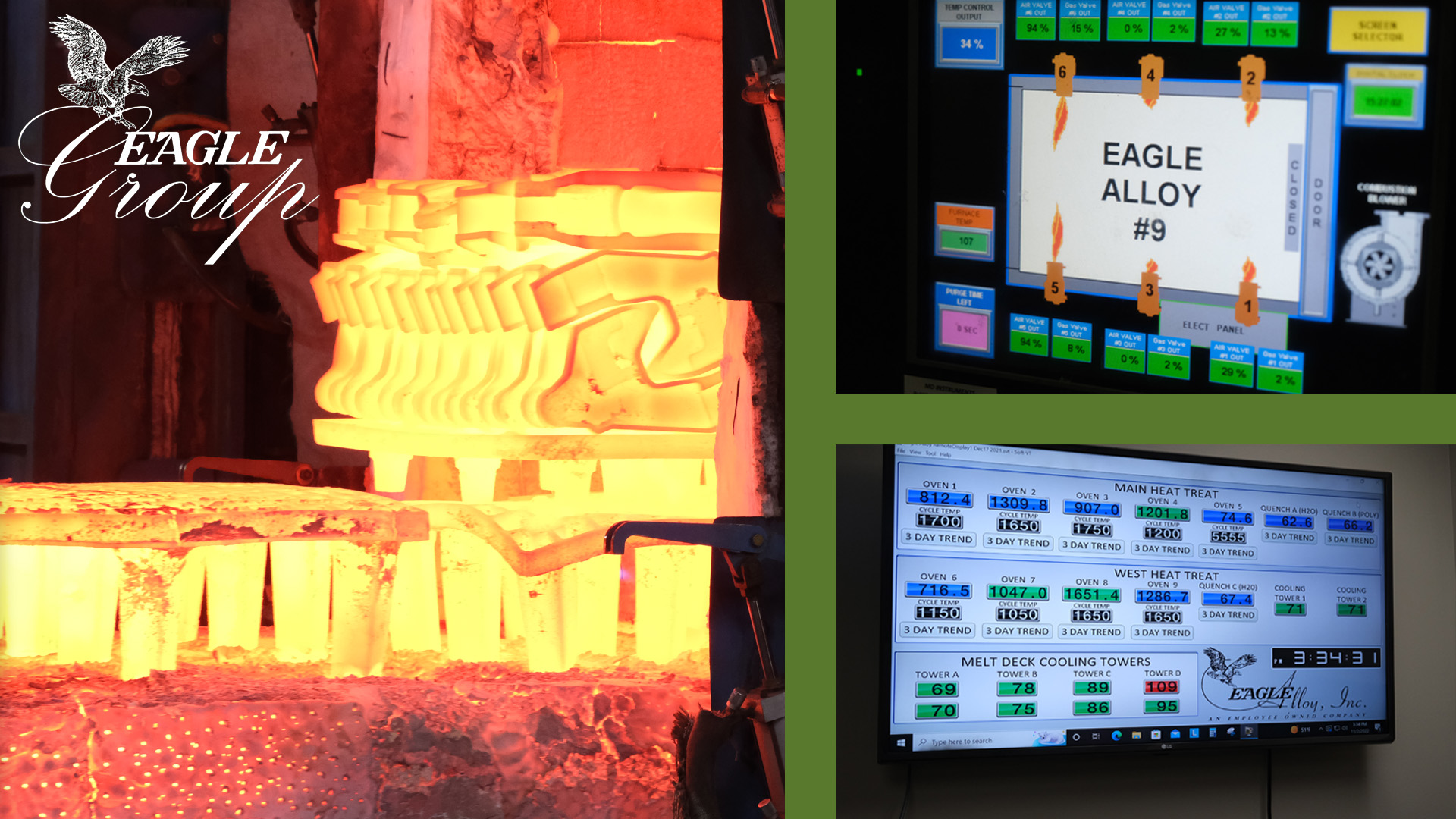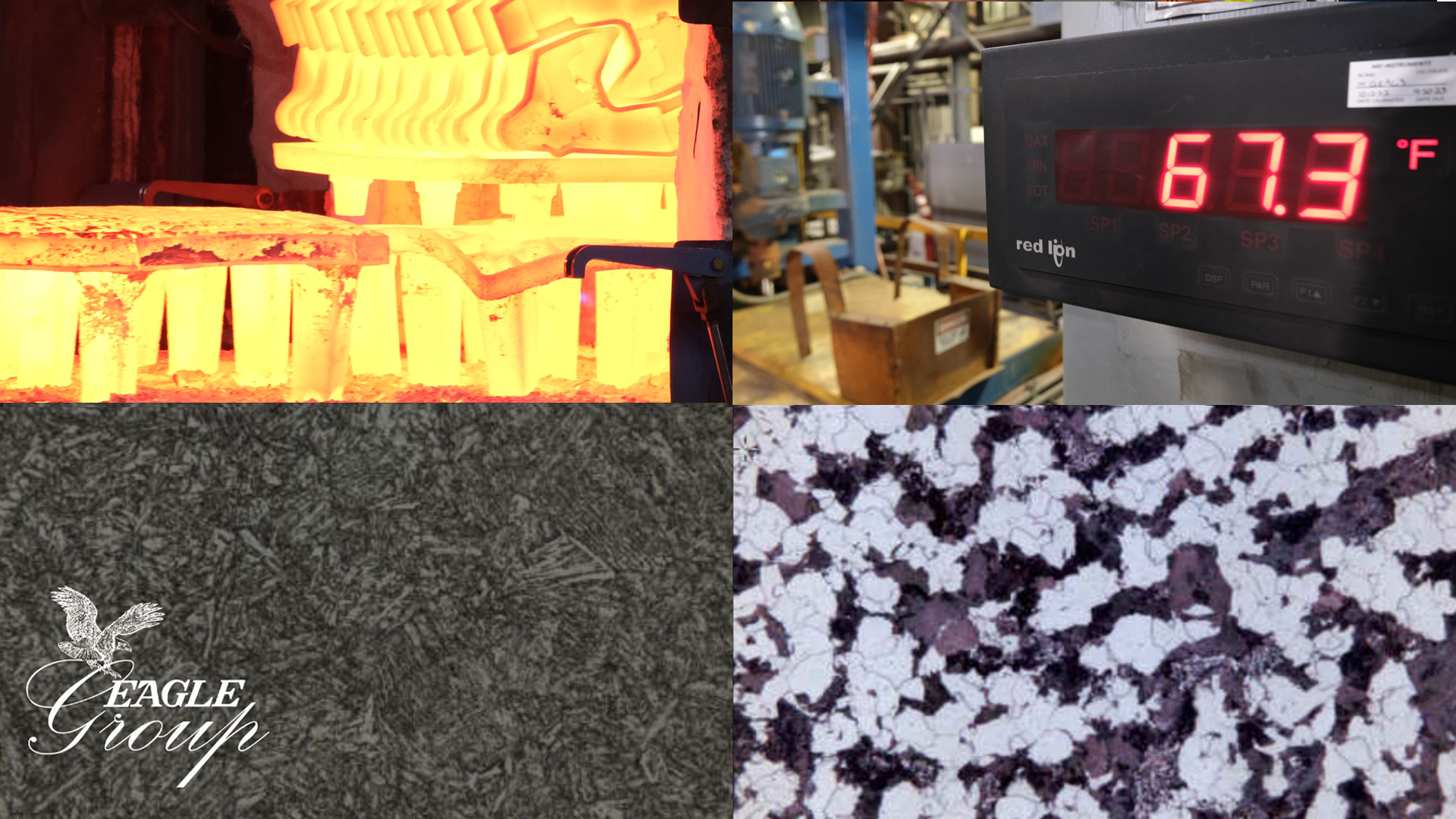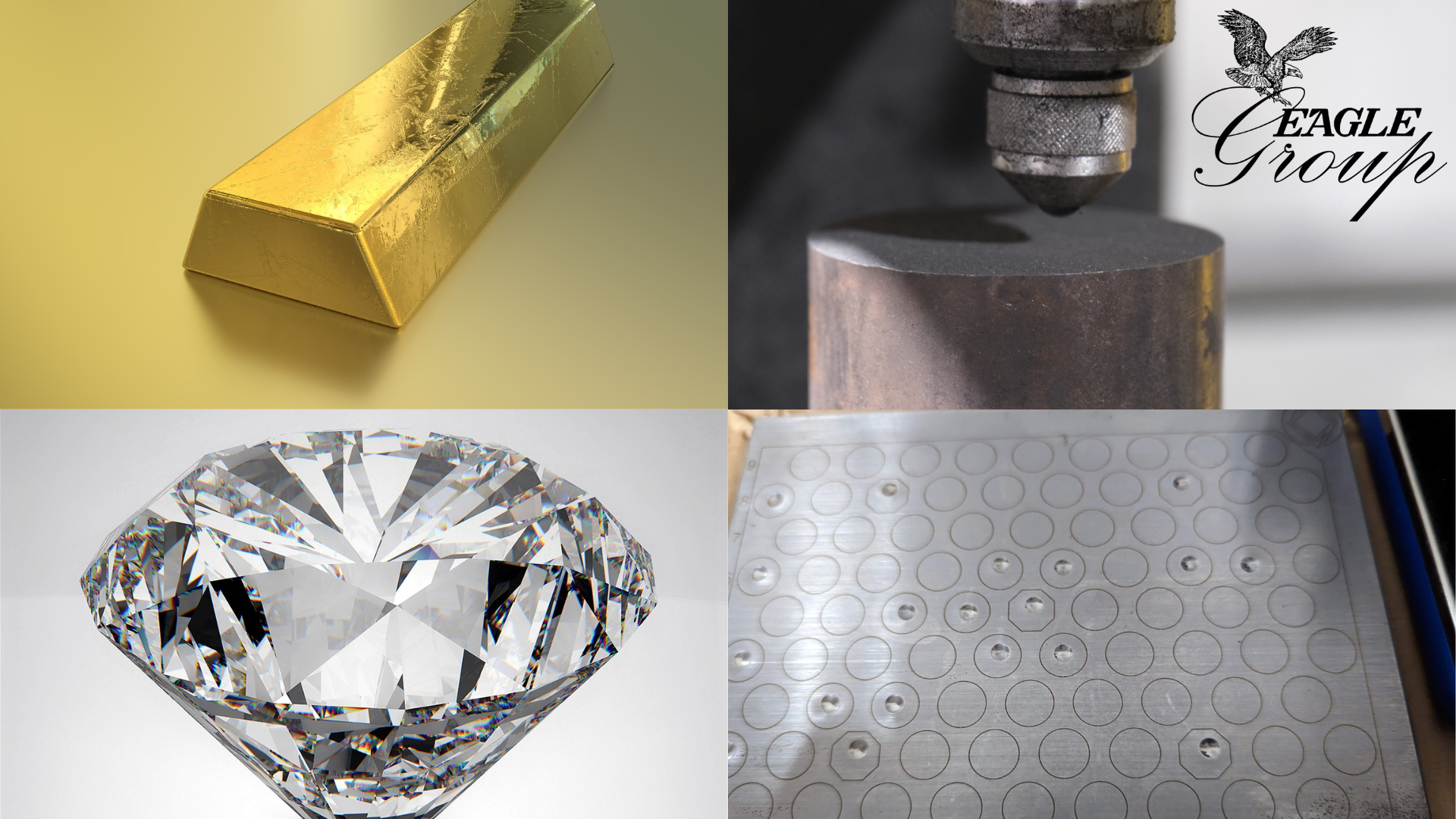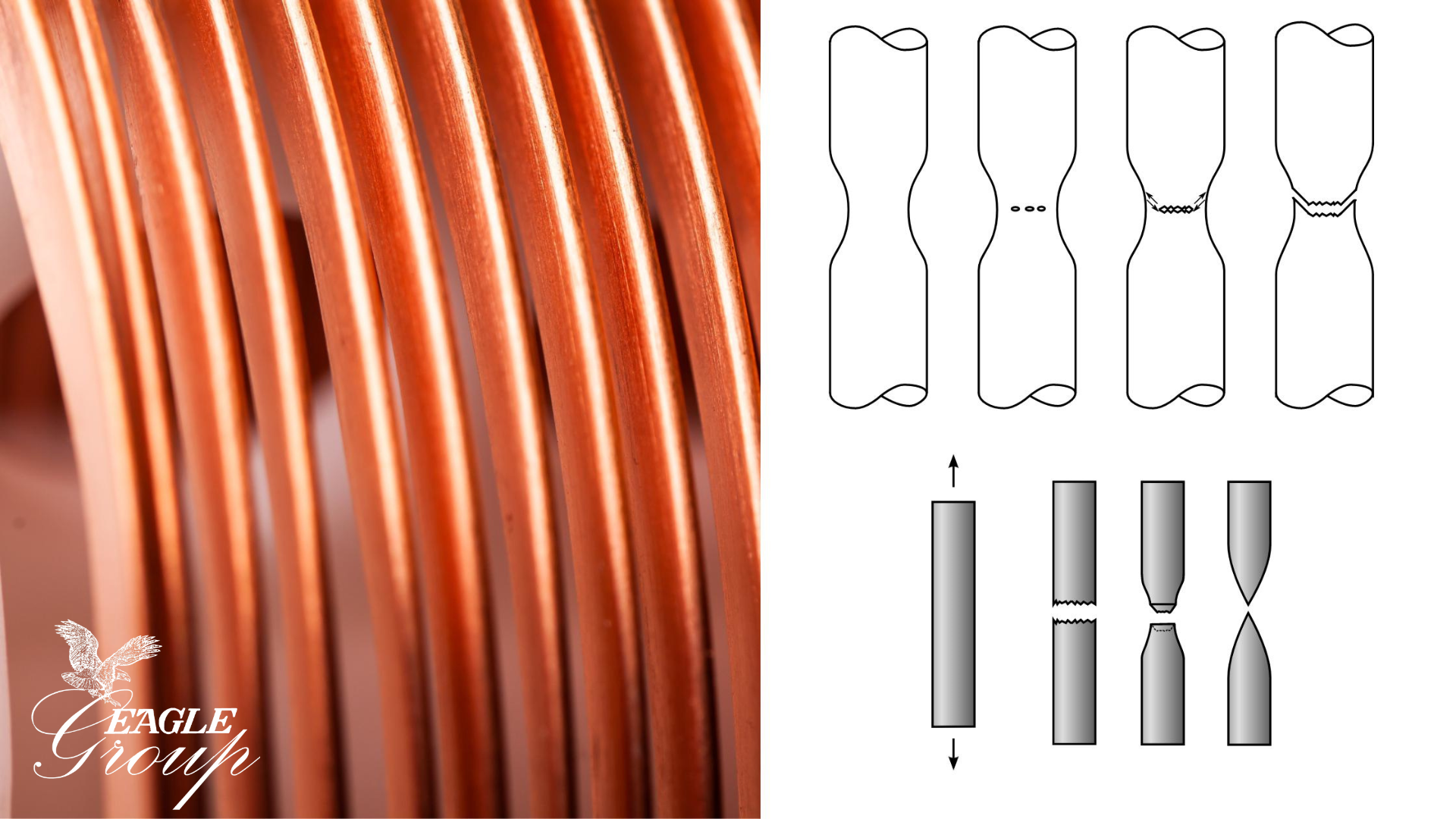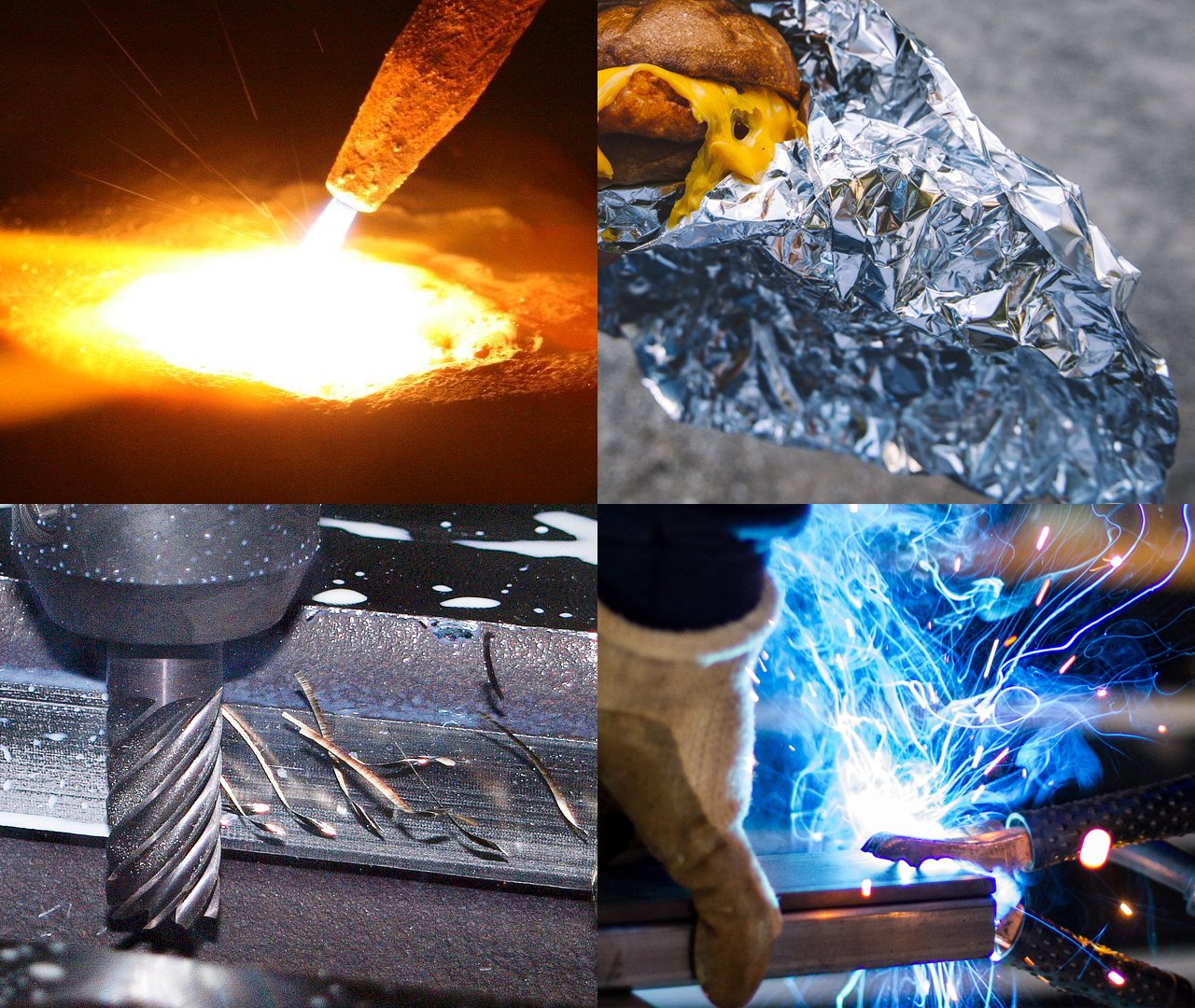Heat Treatment for Cast Products at Eagle Alloy
Eagle Alloy provides a wide range of metalcasting services. In addition to casting hundreds of alloy grades that can be formed into virtually any castable shape, our foundry is fully equipped to heat treat the majority of parts we manufacture. In this blog, we’ll be opening the doors to our heat treatment facilities. You’ll get to know what kind of heat treat equipment we utilize to deliver superior products that consistently meet performance expectations.
Casting a part into its required shape does not fully prepare it for a life of service – only heat treatment can ensure a part performs exactly how it should. With the exception of a handful of nickel-based specialty alloys, Eagle Alloy heat treats just about every part that is cast in our facilities. From annealing and normalizing to stress relieving and quenching, we have the furnaces, quench tanks, data and expertise to take a product from inception to delivery.
Tags: Eagle Alloy, Metallurgy, Heat Treatment
Introduction to Heat Treatment for Cast Parts
Metal manufacturers utilize a number of tools to control the mechanical and physical properties of raw materials. An alloy’s chemistry is only one part of the equation: obtaining the final properties can only be achieved through heat treatment. In this introduction, we'll cover the following topics:
- Why heat treatment is important for metalcasting
- Heat treatment for carbon steel vs heat treatment for stainless steel
- The importance of using ASTM standards
- Key heat treatment processes used by foundries and machine shops
Heat treatment is a broad term describing a range of thermal processes used to control an alloy’s properties. These processes ensure a finished product carries the mechanical and physical properties demanded by its application. Encompassing both heating and cooling, heat treatment incorporates a few distinct and equally important phases:
- Ramp-up: heating the metal;
- Soak: maintaining the metal at a desired temperature for a specified amount of time;
- Cooling: cooling to a specified temperature at a controlled rate and in a controlled environment.
Tags: Metallurgy, Heat Treatment
Metal Properties: Hardness
“Hardness” is a concept we use every day to compare objects: fresh bread vs. stale bread, a baseball vs. a softball. In manufacturing the definition is a bit more specific: hardness is a measure of a material’s ability to resist localized scratching or deformation by indentation at a specific loading location.
Our understanding of hardness and relative hardness between materials is key to manufacturing metal products. The correlation of hardness with other mechanical properties also makes it possible for us to predict, with a high degree of accuracy, the strength and ductility of a material without submitting it to destructive testing.
Tags: Metallurgy, Metal Properties, Measurement, Mechanical Properties
Metal Properties: Ductility
Ductility describes a metal’s amenability to being drawn or stretched without breaking. It is one of the crowning mechanical properties of a metal. Without a sound understanding of the science of ductility, manufacturers would be unable to guarantee the safety of their machinery.
In this blog, we’ll explain why manufacturers rely on ductility to guide them in casting parts that uphold integrity in service while protecting machinery against catastrophic failure.
Metal Properties: Strength
Past civilizations had practical reasons for caring about metal properties. They asked questions like “Can I break my enemy’s sword before he breaks mine?” or “How thick does my armor need to be to provide enough protection?” These warriors had a vested interest in material strength.
Tags: Metals, Metallurgy, Metal Properties, Mechanical Properties
Metal Properties: Corrosion Resistance
Corrosion is a common challenge affecting the surface of most metal parts. While corrosion often only affects the aesthetics of a metal part, severe corrosion can affect performance and can even lead to equipment failure. Corrosion is such a widespread challenge that the global cost of corrosion is estimated to be $2.5 trillion annually, according to a study by the National Association of Corrosion Engineers (NACE).
Here we explore many of the ways corrosion can manifest in a material, and the techniques manufacturers use to prevent corrosion from affecting part performance.
Tags: Materials, Metals, Metallurgy, Metal Properties, Physical Properties
Overview of Mechanical Properties of Metals
In the metal manufacturing industry, mechanical properties play a huge role when choosing the right alloy for each job. Throughout casting and machining processes, as well as during the product's useful life, the chosen material will be subject to many external forces. It’s up to the manufacturers to create products that perform as needed every step of the way. By understanding mechanical properties, manufacturing professionals can make the right choices for materials and processes.
Tags: Materials, Metals, Metallurgy, Metal Properties, Mechanical Properties
Overview of Physical Properties of Metals
Physical properties are an important way of distinguishing one material from another. In the study and application of metallurgy, physical properties are often considered a broader category than mechanical properties, but not all properties overlap. Physical properties are most easily distinguished from mechanical properties by the method of testing. While mechanical properties require forces to be applied to obtain a measurement, physical properties can be measured without changing the material.
Tags: Materials, Metallurgy, Metal Properties




